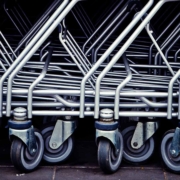Differences in Inventory Replenishment Methodology: Facts and Myths
The Inventory Replenishment Methodology a supply chain solution uses to flag when an inventory replenishment order should be placed is critical to consider when reviewing supply chain software. Review any of the mainstay inventory replenishment systems, and you see what becomes obvious – there are only two methodologies possible. The system signals an inventory replenishment order is needed based on a combination of date, plan, and demand (top down) or based on a combination of service goal, demand, and available inventory (bottom up). Everything after that flag is a mix of tools and features that differ in each software package. While these two inventory replenishment methodologies have similar features and names, the critical things for you to know are:
- How to identify which methodology is used by your software (or software you are reviewing).
- The costs and goals of each methodology and how the differences impact each line of business in your company.
Quick Review of Replenishment and Forecasting Replenishment
Webster’s Dictionary defines replenishment as ‘to fill or build up (something) again.’ When a store shelf or a warehouse space is re-filled with product that is considered replenishment. However, the future demand, or lack of demand, will impact replenishment so the word ‘replenishment’ alone is not an adequate description of the action desired. For example, would you replenish Christmas trees on December 26? Demand based seasonality, promotions, events, competition, and buyer trends all impact the speed of the products leaving the shelf or staying on the shelf un-needed. ‘Forecasting Replenishment’ is the act of predicting what products, what quantity, on what date, and location will be needed ‘to fill’ the shelf or warehouse space. Forecasting Replenishment also requires you have knowledge of the balance of inventory available at the end of each day.
Inventory Replenishment
Acting on the forecast, Inventory Replenishment is the process of replenishing inventory for the shelf or warehouse space. This process is the culmination of all the data points: demand forecast, lead time, safety stock, order point, available inventory, and pick quantity to build an inventory replenishment order. The key to understanding inventory replenishment systems is to understand the ‘flag’ that is used to tell the system to create an order. There are two methodologies inventory replenishment systems use: top down and bottom up.
Download A Free Lead Time Forecasting Kit — in this article:
Learn more Lead Time improvements, download our Lead Time Forecasting kit with articles, Excel workbook, and Slides to get started.
Why Your Lead Time Process Delivers Major Out-of-Stocks and Steps to Fix
Top Down Inventory Replenishment Methodology
A top down inventory replenishment methodology is based on a budget and calendar. Typically, soft-lines use a top down methodology for creating purchase orders. At some point in time, a review of the ‘plan’, current date, open to buy, sales, and receipts informs the buyer that it is time to write a purchase order for a product. You might buy a truck load of towels for your stores based on the sales plan or company plan. You build the truck according to a plan and will then allocate the goods when they arrive using the same plan or demand forecast. The top down methodology will cost more money due to the nature of the aggregations used to build the order. Markets and customers change constantly and the time between planning, implementation of the plan, and store sales can be 3 to 6 months apart. Markdown dollars are used and sales events promoted to move remaining inventory which then allows the process to repeat.

There is a trade off with the top down methodology. The financial side of the business has less risk initially and the markdown dollars when available, further reduce the risk. However, overstock is often purchased to cover the many unknown variables created by each location. The other potential threat to top down is the fact most companies do not alter a plan weekly or monthly based on demand changes. While the open to buy amounts will change, this is a reaction to the past and not an anticipation of future demand.
Top Down inventory replenishment will always cost more inventory dollars then bottom up inventory replenishment. These additional dollars are offset by higher gross margins and markdown dollars and allow you to change product mix 6 or more times a year.
If you are using excel and every individual product/ location does not have a row in your excel worksheet, you are using a top down methodology. If you use some form of this year / last year sales comparison that is a top down methodology. If purchase orders are created by a review of orders each week (any time frame) and budget dollars available, again this is a top down methodology.
Bottom Up Inventory Replenishment Methodology

A bottom up inventory replenishment methodology is based on the service goal and the amount of available inventory at each product/ location. Typically, general merchandise, hard-lines, and food companies prefer the bottom up methodology. A bottom up system can react to individual product/ location market changes rapidly to maintain a service goal. This individual approach costs less money to operate but requires a software program that in the past needed to run on large hardware like an AS400. The software system must evaluate every single product/ location combination each night and build orders to meet service. A company could have 300 stores and 40,000 products resulting in 12million combinations that need to be reviewed.

Some of the issues with a bottom up methodology include planning and demand forecast. While a bottom up inventory replenishment system reacts quickly to market factors, it is not tied to a budget directly. If sales start to rapidly increase, then the system will work to keep inventory flowing to the location where needed. The company plan may not have forecasted this event and the cash available for purchase orders may be constrained. The most common thing I have to remind people of is that replenishing occurs because of recent demand coupled with forecasted future demand. If you do not place the purchase order, then you will have lost sales – that is the nature of replenishment.
If your purchase orders are based on a software package that has the goal to meet service first (not plan or budget), then it is a bottom up inventory replenishment methodology. The key fact is to understand what the primary constraint is: [date and plan] or [service goal].
Which Inventory Replenishment Methodology is Right for You?
Bottom Up inventory replenishment systems cost less to operate, and studies show that service level improvements increase sales and provide a significantly higher ROI. For over 85% of products you carry, a service level increase will have a 2-4X higher ROI than an in-stock percent increase. The tradeoff for bottom up systems is they are primarily for use with products (or replacement products) you will purchase 3 or more times in a year. A new product with no similar product to use for a sales pattern can only use a top down methodology. A top down methodology has some benefits from a financial planning viewpoint, but these same benefits can also lead to disaster if exception management isn’t employed.
The process of inventory replenishment can be daunting; fortunately, there are systems available today to manage the math faster and cheaper than anything on the market 5 – 7 years ago. The two core inventory replenishment methodologies each have an important place in business. The key is for you to understand the differences, when each method should be used, and the tradeoffs in terms of costs, response time, and returns.
Are your ready to ‘Tighten the Links in Your Supply Chain? ™’
Understanding how your inventory replenishment system thinks can be complicated, but when you understand how it works, that can provide new opportunities to grow your business. We are here and ready to help. Contact us for a free consultation about your supply chain opportunities. You can also request a demo and see how things can really start to improve in your business in 90 days.
Copyright © Data Profits, Inc. 2013 All Rights Reserved.
- Demand Forecasting: The Ultimate Secret for Your Organization’s Success - August 7, 2024
- How to Avoid Carrying Cost Mistakes in Inventory Optimization - June 10, 2024
- 3 Common Forecasting Software Issues and How to Fix - May 20, 2024








